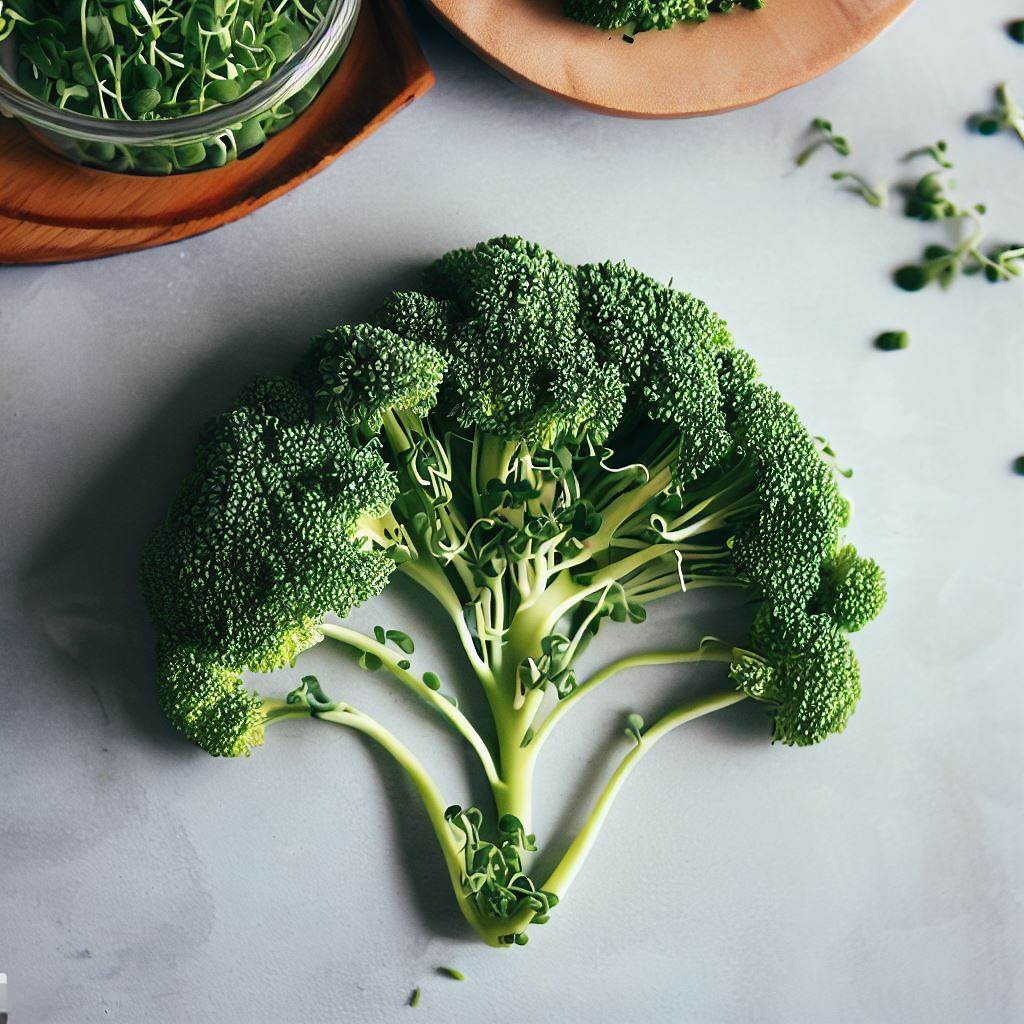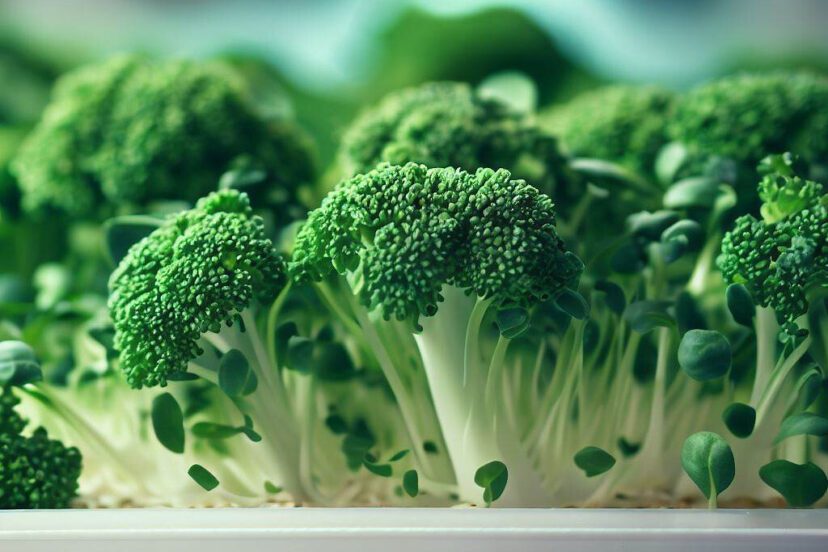How to Grow Broccoli Microgreens: A Step-by-Step Guide for Nutrient-Packed Greens
Introduction to Broccoli Microgreens
I am excited to share my knowledge on how to grow broccoli microgreens. These tiny, nutrient-packed greens are an excellent addition to any healthy diet and can be easily grown in the comfort of your own home. In this article, I will provide you with a step-by-step guide, along with helpful suggestions and reasons behind them, to help you successfully grow and enjoy your own delicious broccoli microgreens.
Benefits of Growing Broccoli Microgreens
Before we dive into the growing process, let’s take a moment to understand the incredible benefits of incorporating broccoli microgreens into your diet. These vibrant greens are a concentrated source of vitamins, minerals, and antioxidants. They contain high levels of vitamins C, A, and K, as well as essential minerals such as potassium, calcium, and iron. Broccoli microgreens are also known to be rich in sulforaphane, a compound with potential anti-cancer properties. Adding these nutrient powerhouses to your meals can boost your overall health and well-being. You can read some more benefits of why incorporating broccoli microgreens into your diet from this scientific research study.
Step-by-Step Guide to Growing Broccoli Microgreens
1. Choosing the Right Seeds
To ensure successful growth, it’s essential to select high-quality broccoli microgreen seeds. Look for reputable seed suppliers that specialize in microgreens. Choose organic and non-GMO seeds whenever possible to ensure you’re starting with the best foundation for your microgreens.
2. Preparing the Growing Medium
A suitable growing medium is crucial for the healthy development of your broccoli microgreens. Fill a shallow tray or container with a soilless medium such as peat moss, coconut coir, or a specialized microgreen growing mix. Make sure the medium is well-draining and provides adequate moisture retention.
3. Planting the Seeds
Evenly spread the broccoli microgreen seeds over the prepared growing medium. Gently press them into the surface, ensuring good seed-to-soil contact. It’s important not to overcrowd the seeds, as this can lead to competition for resources and hinder growth. Aim for a dense but not overly thick distribution.
4. Providing Proper Light and Temperature
Place the tray of planted seeds in a location with indirect sunlight or under grow lights. Broccoli microgreens require around 12-16 hours of light per day. Maintain a consistent temperature between 60-75°F (15-24°C) for optimal growth. Adequate light and temperature will promote strong and healthy microgreen development.
5. Watering and Caring for the Microgreens
Water the growing medium gently using a spray bottle or a watering can with a fine mist attachment. Ensure the medium is evenly moist but not waterlogged. Avoid overwatering, as it can lead to mold and fungal issues. Check the moisture level daily and adjust your watering schedule accordingly.
Throughout the growing process, keep a watchful eye on your broccoli microgreens. As they start to grow, you may notice some tiny green leaves emerging from the soil. This is an exciting stage, indicating that your microgreens are on their way to becoming nutrient-packed delights.
Harvesting and Using Broccoli Microgreens
1. When to Harvest
Broccoli microgreens are typically ready for harvest within 7 to 14 days after planting, depending on the growing conditions and the desired size of the greens. Once the first true leaves appear, and the microgreens reach a height of 1.5 to 2 inches, they are ready to be harvested.
2. How to Harvest
Harvesting broccoli microgreens is a simple and rewarding process. Using a pair of clean scissors or a sharp knife, cut the greens just above the soil line. Be gentle to avoid damaging the tender plants. After harvesting, give the microgreens a quick rinse and gently pat them dry with a clean paper towel.

3. Ways to Use Broccoli Microgreens in Recipes
Now that you have your freshly harvested broccoli microgreens, it’s time to enjoy their delectable flavor and health benefits. These greens add a delightful crunch and a mild, slightly peppery taste to a variety of dishes. Sprinkle them over salads, sandwiches, wraps, or soups for an instant nutritional boost. You can also blend them into smoothies or use them as a garnish for main courses. Get creative and experiment with different recipes to discover your favorite way to savor these tiny greens.
Troubleshooting Common Issues
As you venture into the world of growing broccoli microgreens, you might encounter some challenges along the way. Here are a few common issues and how to address them:
1. Mold and Fungus
Mold and fungus can develop if the growing medium remains excessively damp. To prevent this, ensure proper drainage and ventilation in your growing area. Allow air circulation to minimize moisture build-up. Additionally, avoid overwatering and use sanitized equipment and trays to reduce the risk of contamination.
2. Over or Under-Watering
Finding the right balance of water can be tricky. Under-watering can stunt growth, while overwatering can lead to mold and root rot. Check the moisture level regularly and adjust your watering routine accordingly. A consistent, gentle misting is usually sufficient to keep your microgreens happy.
3. Pests and Diseases
Keep a watchful eye for pests like aphids, mites, or fungus gnats. Introduce natural predators like ladybugs or use organic pest control methods to manage infestations. To avoid diseases, always use clean tools and trays, and discard any damaged or infected plants promptly.
Frequently Asked Questions (FAQs)
1. Can I use regular broccoli seeds for microgreens?
Regular broccoli seeds are not recommended for microgreens, as they are bred for full-sized plants and may not produce the tender, flavorful shoots that microgreens offer. Opt for specific broccoli microgreen seeds, readily available from reputable seed suppliers.
2. How long does it take for broccoli microgreens to grow?
Broccoli microgreens typically take 7 to 14 days to reach harvestable size, depending on the growing conditions and the variety of seeds used.
3. Do I need special equipment to grow microgreens?
While special equipment like grow lights can enhance the growth of microgreens, they are not essential. Broccoli microgreens can thrive in a well-lit windowsill or under natural light.
4. Are broccoli microgreens nutritious?
Absolutely! Broccoli microgreens are packed with essential nutrients, including vitamins C, A, and K, minerals, and antioxidants. They offer a concentrated dose of health benefits in a small package.
5. Can I reuse the growing medium for multiple batches?
It is best to start with a fresh growing medium for each batch of broccoli microgreens. Reusing the medium can increase the risk of disease and affect the overall growth and quality of subsequent batches.
Conclusion
Growing broccoli microgreens is a rewarding and fulfilling experience that allows you to enjoy the freshness and nutrition of these vibrant greens in the comfort of your home. By following the step-by-step guide and implementing the helpful suggestions provided in this article, you’ll be well on your way to cultivating your own delicious and nutritious broccoli microgreens. Get started today, and enjoy the journey of growing and savoring these tiny wonders of nature.




